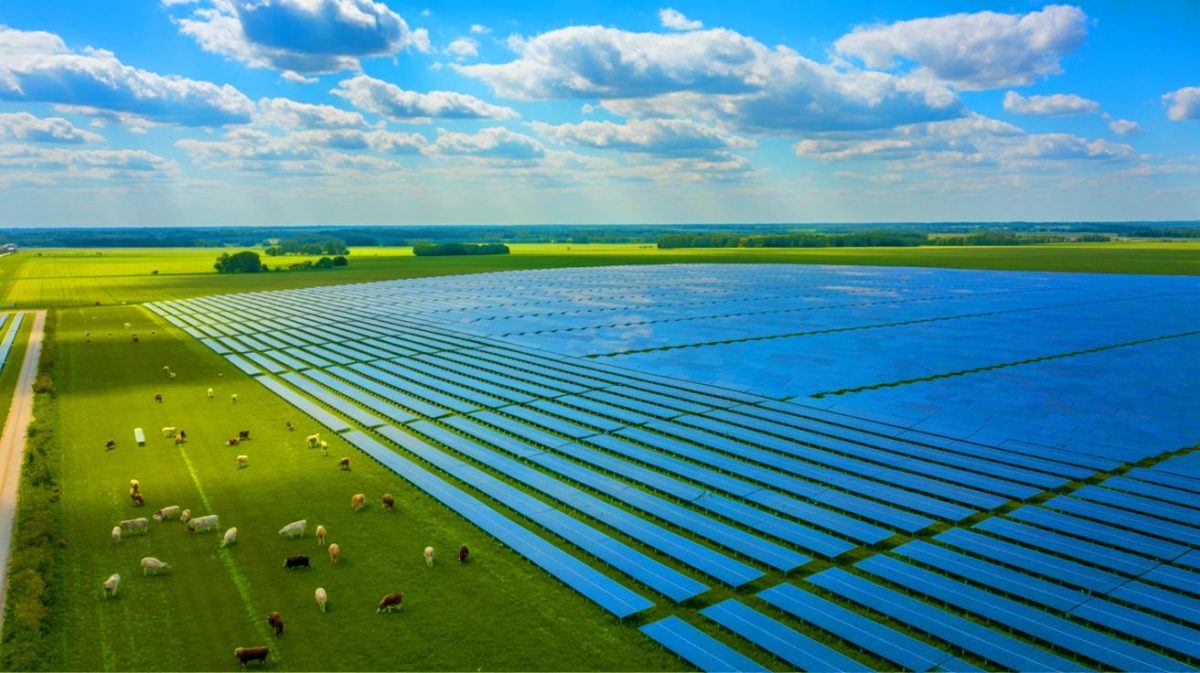| IN A NUTSHELL |
|
The Mammoth Solar farm in northern Indiana is poised to become a landmark in the United States’ renewable energy landscape. This ambitious project, spearheaded by Doral Renewables and the engineering giant Bechtel, promises to significantly boost solar capacity while creating numerous jobs and fostering sustainable agricultural practices. As we dive into the details of this project, it becomes evident that its impact extends far beyond energy production, touching on economic, environmental, and technological realms.
The Mammoth Solar Project: A Renewable Energy Giant
The Mammoth Solar project is a testament to the growing momentum in the renewable energy sector. With a capacity of 1.3 gigawatts, it is set to be one of the largest solar farms in the United States. The collaboration between Doral Renewables and Bechtel marks a significant milestone as they aim to increase Indiana’s solar capacity by over 20%. This project is strategically divided into three segments: Mammoth South, Mammoth Central I, and Mammoth Central II, collectively delivering 900 megawatts AC of clean energy, sufficient to power approximately 200,000 homes.
Bechtel’s role in this project is pivotal, with the company tasked with installing nearly two million solar panels over the next two years. Notably, about half of these panels will be manufactured in the United States, supporting local industries. Utilizing its award-winning digital delivery methods and autonomous technologies, Bechtel aims to streamline construction processes, ensuring efficient and timely project completion. The project’s scale and ambition highlight the potential for renewable energy to transform communities and redefine energy production standards.
Job Creation and Community Impact
A project of this magnitude not only advances renewable energy goals but also generates substantial economic benefits. The Mammoth Solar farm is expected to create over 1,200 jobs during its construction phase, with a noteworthy commitment to apprenticeships, accounting for at least 15% of these positions. Such initiatives underscore the project’s dedication to fostering local talent and providing opportunities for skill development.
Furthermore, the project introduces the concept of agrivoltaics, which integrates livestock grazing and crop cultivation with solar panel installations. This dual-use approach allows farmers to continue agricultural activities while contributing to renewable energy production. It represents a harmonious blend of technology and traditional practices, ensuring that the local community remains an integral part of the transition to renewable energy. As Doral Renewables and Bechtel continue to focus on safety, quality, and environmental stewardship, they also prioritize building strong community relationships, thereby ensuring that the project’s benefits are widely felt.
Bechtel’s Experience and Expertise
Bechtel’s involvement in the Mammoth Solar project is backed by its extensive experience in large-scale energy projects. One notable project from the past is the Ivanpah solar power plant in California’s Mojave Desert. A pioneering initiative, Ivanpah employed concentrated solar power technology using parabolic mirrors to focus sunlight onto central towers, generating significant amounts of energy.
This experience has equipped Bechtel with the knowledge and expertise necessary to tackle the challenges of the Mammoth Solar project. The company’s past successes underscore its capability to deliver complex engineering solutions. As the project progresses, Bechtel’s reliance on its digital delivery methods and autonomous technologies promises to enhance efficiency and outcomes, setting a new standard for future renewable energy projects.
The Future of Renewable Energy in the United States
The Mammoth Solar project is a glimpse into the future of renewable energy in the United States. As the nation strives to reduce its carbon footprint and transition to cleaner energy sources, projects like Mammoth Solar play a crucial role. The project’s dual focus on energy production and community engagement highlights a sustainable path forward, where economic growth and environmental stewardship go hand in hand.
As we witness the successful integration of advanced technologies and traditional agricultural practices, the question arises: How can other states and communities replicate this model? The Mammoth Solar project serves as an inspiring example of what is possible when innovation and collaboration come together, challenging us to envision a future where renewable energy is accessible to all and benefits both people and the planet.
Did you like it? 4.6/5 (24)









Wow, 1.3 gigawatts! That’s like a scene from Back to the Future. 🚀
How much space does the Mammoth Solar farm actually occupy?
It’s great to hear about job creation, but are these jobs permanent?
Will the energy produced be used locally in Indiana or distributed more widely?
1,200 jobs is impressive! Are there any plans to expand this number?
I’m curious about the environmental impact. Is there any downside to such a large solar farm?
Integrating agriculture with solar panels is such a smart idea! 🌱
How long is the construction expected to take?